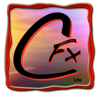Screenium 3 for Android
- REQUIRES ANDROID | Published by Synium Software GmbH on 2024-09-17 | Category: Video
Rating 0
from 0 Votes |
$ $26.99
APK (Android Package Kit) files are the raw files of an Android app. Learn how to install screenium-3.apk file on your phone in 4 Simple Steps:
Yes. We provide some of the safest Apk download mirrors for getting the Screenium 3 apk.
UPDATE: (5 weeks of use) Problem: I can't adjust sound once a recording starts. I can't use the touchbar, nor the System Preferences ... Sound app to increase the volume. I can't find a way to do this within the Screenium active recording either. Therefore, drop 1 star again. Wanted something more than Viola/Capto or Quicktime so I picked up Screenium. So far, I like its capabilities. Editing is enough for most, but I work video in FCPX so that's not a gating item if I can't do something in Screenium itself. Issues I don't like: Choose to record a specific Window, but if you move the Window during recording, the camera does not track with the Window...strange. Knowing that, its wiser to just use a specified area or whole screen. Seems that unique choice should have Window tracking assigned to it's specs. Also, for a Android Store Android app, I find it disturbing to see the default hot keys reference "alt" rather than "⌘". Had to remap them all. ..hence the 1 star deduction
I needed a solution to record my screen in retina so I could have a 4k recording and be able zoom-in on areas to see detail. My final video would be 1080 but I needed the source to be 4k and record just a portion of my screen. The app description says it records in 4k and 5k - but the app doesn't do it. It shows the 2x scaled down sizes, not the actual pixel sizes. Really frustrating to trust and pay and then it just doesn't do it. Can I do no stars?
Have licesenses to almost everything that records a screen. Big part of my workflow. Grew up using Camtasia on Windows, over a decade at this point. Camtasia 2020 is a decent recorder, outstanding editor on both platforms (but weaker on the Android). But, in terms of codecs, quality of compression, and output, I would rate it the weakest of these three, on the Android. If I am animating or annotating, this remains my fave of the 3. No HEVC though. Boo. Screenflow 9.0.3 is a solid little product, much more tightly coded from a native OS X perspective. It captures and outputs very well, but have never quite liked it much as an editor. I usually just output and dump in to DaVinci resolve Studio. It's only $100 or so per year, but this is likely my last year updating. Screenium 3 has made huge leaps since I purchased 3 years ago. Intuitive little interface, tightly integrated with the OS. I use Screenium for one thing, capture and output. I do not edit in it, although you could if it was all you had. I do not animate, annotate or do anything but capture. But, WOW, it absolutely rocks in terms of quality and control. The best of breed, for screen capture and screen output on the Android, IMHO. Fast, and the developer really keeps up with new OS and OS X beta releases. Well, worth the money, IF, you edit in other programs.
This app records the screen and the audio. You can either talk while recording or do a voiceover after the recording. It also has an option of recording only a window. It's a very powerful yet easy-to-use tool!
I have been using Screenium since version 1 to prepare tutorials for our software. Overall, this software does the job, captures your screen, or a portion of it, with multiple audio tracks. I am updating to reflect changes in version 3.2.9. Until Android Catalina, Screenium was able to export to HEVC using hardware acceleration, which was awesome. For some reson (I contacted Screenium support over this), this no longers works in Android 10.15.1 because Google changed something. Otherwise, Screenium is reliable and stable.
|
|

|
|

|

|
|

|
|

|

|